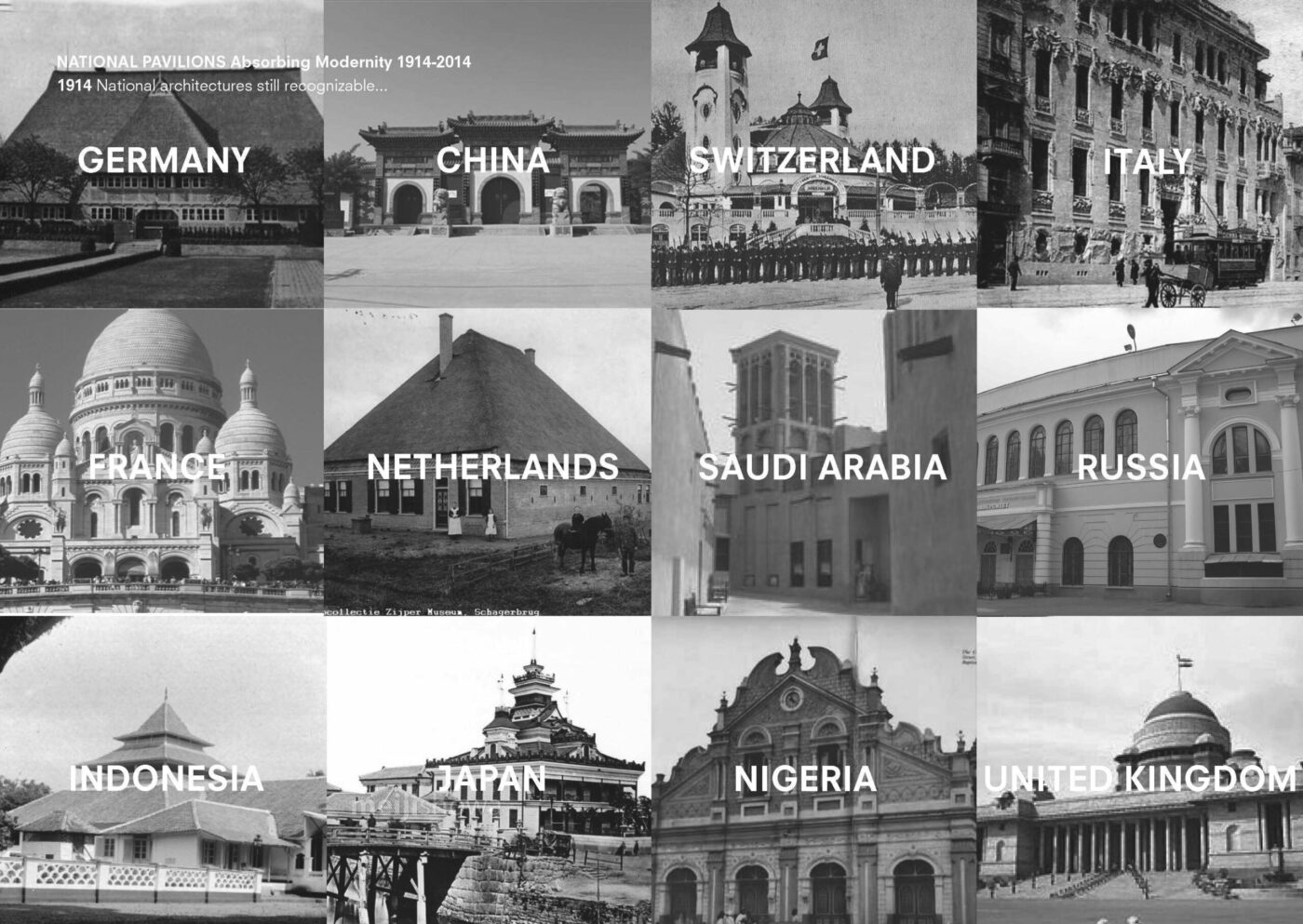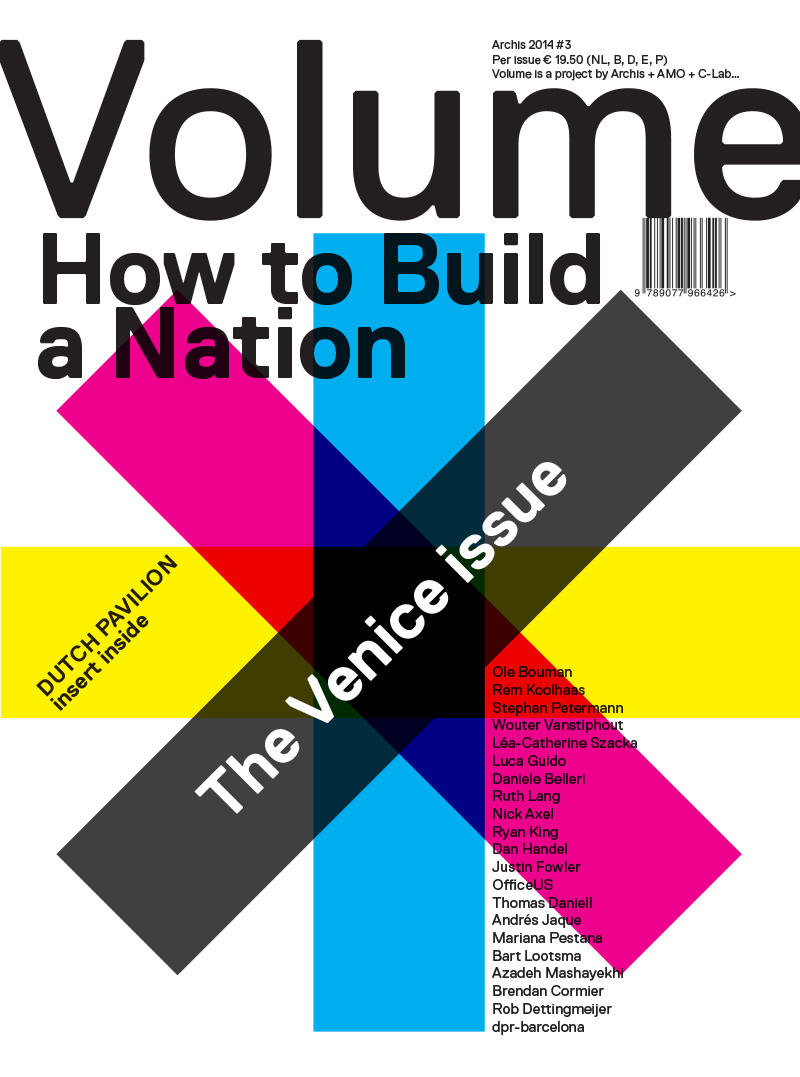
With Rem Koolhaas ‘couch surfing’ has acquired a new meaning. Anyone lucky enough to actually get an interview with Koolhaas will most likely end up on his couch. The back seat of his BMW that is. Some private conversation time, wherever the journey takes you, accompanied by the deep hum of the V12 sports engine. Volume became member of this back seat club to discuss some intentions behind Fundamentals and perspectives on architecture it produced.
Arjen Oosterman: Your curatorial exhibition Elements of Architecture started with a hunch that looking at architecture this way may produce some idea or insight. What did you find?
Rem Koolhaas: It is difficult to mention one aspect. For me there are several outcomes. Before we started there was no particular focus in one direction. We often start with a hunch and see how it develops. With this project we were confident from the start that directions would emerge or conclusions would announce themselves or urgencies would develop. That took a year to become clear. There are three serious components: The incredible intelligence that architecture has been generating and which is seemingly receding to the background. That is a flattening of the profession. We had to be more thorough than we had been before. In other words, I was horrified to realize that I never really had thought about a staircase. The more we looked at elements in isolation, the scarier they became – particularly when you looked at them in movies.
In addition to such aspects that could be more or less expected, we discovered the urgency that all these elements are tending to merge with digital technology. Not only in terms of an alert, but also to see that each element has a certain amount of potential in relation to digital technology that we will have to develop. In the book version of Elements, we have been working with Werner Sobek and Chris Carrol amongst others, to try to define the future of architectural elements and therefore the future of architecture.
Looking at the elements, we realized that, much more than we had previously thought, architecture is not defined as a comprehensive thing, but through the ingenuity of a collectively acquired overall intelligence. That we launched this at the moment when each element is undergoing a transformation by digital technology, made it particularly compelling.

AO: What you just described, the relation with digitalization, the emphasis is on how elements start to interact invisibly, not how they look. In the small test exhibition in Rotterdam, some 18 months before the opening, presenting research by your Harvard students, it was very much about the physical entities and how they interrelate spatially.
RK: I don’t see that we’re looking at just one aspect and not at the other. And implicitly, this is presented as a work in progress. That’s also why we didn’t want the catalogue to have a book-like condition. We’re still working on the book with Taschen that we’ll present in the spring. You can construct very diverse articulations and arguments for each element. And as an exhibition, we wanted it to be diverse and not too coherent or coming from one point of view. Not to say rigidly: this is what we’re doing and imposing on the material.
AO: One critic wrote that this show should have produced theory and that it failed to do so.
RK: I never understand what people mean by theory in architecture. They said the same about Delirious New York and forty years later it is considered part of theory. So eventually, I think, this will also have some intellectual effect.
AO: You can interpret this Biennale as coming from a negative understanding of the state of architecture, stemming from worry. If so, this would be an attempt to restart.
RK: Did you really feel so?
AO: You can also read it as an optimistic attempt to show the insane richness and intelligence of architecture.
RK: I definitely started with a pessimistic feeling. But also with an intuition that we hadn’t looked sufficiently enough at an intellectually rich image of architecture. And it is a long-standing argument that we [as architects] are provoked by the economy and the economic system in focusing on only one aspect of architecture at the expense of many others. So when we started to look at the others, it revealed an astonishingly rich world that we – and I don’t know if we should talk about we here – that I had almost forgotten.
AO: There are two parts to this exhibition, Elements of Architecture and Absorbing Modernity
RK: Three.
AO: ?
RK: Monditalia.
AO: Yes, sorry, of course.
RK: The three are really interlocking.
AO: With Monditalia in the center?
RK: No, I would say the broader field is Absorbing Modernity with the two other entities within it: Elements and Monditalia. In the end it is an exhibition about the whole process of modernization.
Brendan Cormier: Let’s move to Absorbing Modernity then: we wanted to look at what the national pavilions should do, what is their function. By setting the theme, you sort of took control. Did you have a preconceived idea of what the pavilions should do?
RK: It was coming from the instinct that there was a lot to discover. It certainly wasn’t an illustration of a thesis or question. I’ve only recently been able to see what Absorbing Modernity provoked. I’m really impressed with the energy and diversity of the responses.
BC: But what in your view is the purpose of a national pavilion today?
RK: That was the beauty of our question. We could prove the relevance of the pavilions. At the beginning I was doubting that you could look productively at globalization through this lens of the national pavilions, but on the contrary, it did unmistakably prove the relevance of the effort. The same for the Biennale as a whole. You can feel invigorated by it.
AO: We’re testing ideas to address the political nature of the Biennale in this issue, so to show how the Biennale with its Giardini and national pavilions stems from colonial times in its hierarchies and setting.
RK: No, I think the Biennale is a fascinating map that reflects all the changes that happened over the last one hundred years. Behind the scenes we’re trying to include new countries to the Giardini. It is a problem that it is currently a freeze-frame situation. Did you see the Ukraine, with their military tent on the embankment in front of the Giardini? It was astonishing.
BC: One of the main ideas coming from the Giardini and the pavilions for me was what can architecture contribute to the nation-state. And can one formulate a positive role for architecture?
RK: How would you see that, is there an answer?
BC: Well, in its aggregate form, architecture can.
AO: When we invited people to contribute to this issue, there were hardly any that were willing to even consider a positive relation between architecture and nation-state.
RK: And how do you explain that? It is very interesting that this Biennale really confronts a number of convictions that are current today, which turn out to be so deeply embedded, it’s scary; the prejudices of what architecture can do or cannot do. As a result of neo-liberalism or of globalization, which should have achieved the opposite, a fantastic playground for architecture assuming many more roles and many more opportunities but no, it is completely pessimistic about this.
I think the explanation is that the regime of the market economy, which presumably is promoting innovation and exchange, is not doing that at all. But it is too early to come to that conclusion in general, and therefore the effect is the killing of creativity and innovation. And that is part of a much larger problem.


AO: We grew up in a period when modern architecture was considered as something positive, the expression of future and hope. And people were quite willing to embrace that. And that all of a sudden changed in the nineties.
RK: People saw the social intentions in for instance a Hertzberger building and all of that is now thrown away. But architects have not been honest enough to admit that the roles they now have to play are caricatures of the roles they could play. The profession itself has been talking of the expansion of possibilities, the expansion of territory, but has not been honest about the constraints.
This is for me one of the mysteries. I’m still considered a surfer. The critical dimension of everything I’ve done, written and said is invisible in view of the rigidity of these expectations. I could write an article on my own activity as the Savonarola of the market economy, right? As if I’ve only been promoting shopping. Very strange.
BC: In one of the pre-essays to the Biennale you wrote that architects don’t work for the state anymore. But you seem to be an example of the opposite.
RK: Yes, yes, I am a very untypical architect. And that is not for nothing. My sympathy is with that old-fashioned kind of architecture.
BC: Don’t you think other architects have these kinds of projects?
RK: Well, they do, I don’t think I’m an exception. But my discourse has been about the influence of the market economy on architecture, but on the other hand, I’ve kind of rigidly tried to adhere to the public project.
BC: In your contribution to the previous Biennale you focused on anonymous architects, those who worked in bureaucracies.
RK: For us it was an attempt to show the creativity of that role.
AO: In preparation for this Biennale you also re-read Frampton’s Critical Regionalism and according to Stephan Petermann, you were struck by the negativism underpinning that rescue operation to save modernism from total demise.
RK: I think it is highly relevant in this context. In retrospect, I respect what he was trying to do much more than before, and as an early hostility towards the direction architecture was going. And to try to find the regional as an antidote was very understandable. But there were two aspects:
It was not a smart way of defending an internationalist movement, and it was a bit naïve to consider the region a stable entity that was not modernizing at the same time. So two mistakes about it. But in retrospect I’m much more sympathetic to the alarm it expressed.
AO: That comes down to instability and how architecture can relate to that.
RK: That is the whole question of modernization: How can architecture relate to instability.
AO: We’re engaged in a research project called Architecture of Peace that starts from the basic question: can architecture contribute to peace, can it help create a stable society?
RK: I think there are very compelling arguments in many of the pavilions that architecture can play a constructive role in the idea of reconstruction, whether after a war or a new regime. Architecture can create a compelling stage set for the Russian Revolution, for Rotterdam after the war, and so on. So in those moments there is no doubt what architecture can do, the agency of architecture. The difficult period comes later. Can architecture reconsider, or become more complex, or be less of a one-liner, or become relative.
AO: What struck us looking at situations in Beirut and Kabul and other post-conflict areas, is that architecture often has such a disruptive effect, contributing to conflict rather than to peace.
In the culturally homogeneous situation of postwar Rotterdam, it is clear what architecture can and should do, but in the culturally far more complex situations just mentioned, this is not self-evident at all.
RK: No, today the situation is much more complex. And the market economy is the determining factor.
 This article was published in Volume’s 41st issue, ‘How to Build a Nation’.
This article was published in Volume’s 41st issue, ‘How to Build a Nation’.